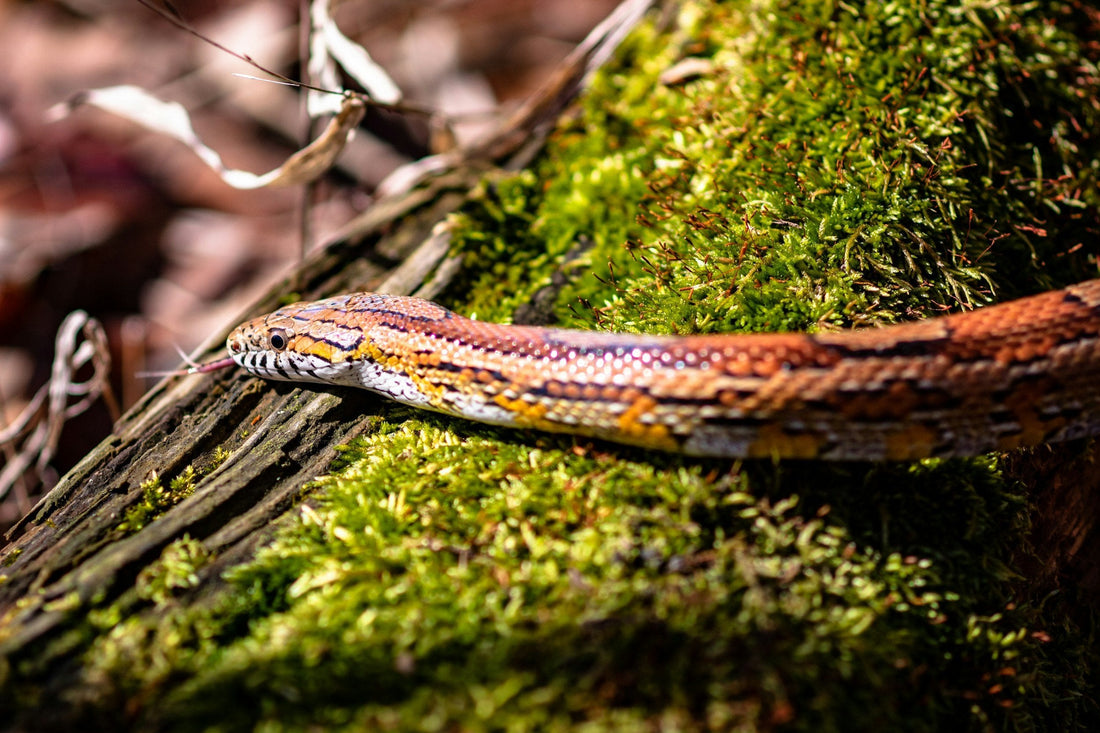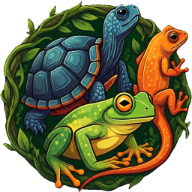
Pantherophis guttatus
The corn snake, or red rat snake (Pantherophis guttatus), is a species found in the southeastern United States and northern Mexico. They are primarily located in pine forests and cornfields, which is the origin of their name ‘cornsnake.’ They can grow to about 120-150 cm in length and live for 15-20 years. Corn snakes are crepuscular and nocturnal. They are one of the most popular snakes to keep as pets due to their calm temperament.
Enclosure
The rat snake is a solitary creature. Snakes feel most comfortable when they are alone. Just because they tolerate each other does not mean they enjoy the company. The terrarium should be a minimum of 120x50x50 cm, preferably even larger. The snake needs to be able to stretch out in its habitat. Choose a container that is not too low, as they sometimes enjoy climbing, despite being primarily ground-dwellers. Ensure that there is a thick substrate of at least 10 cm and plenty of hiding spots, as they often like to burrow. The substrate can be made of cocopeat, for example. Make sure the rat snake cannot access the heat source, as they can burn themselves. For decoration, you can use branches and stones. The stones are appreciated for warming themselves, and they can climb over the branches. Avoid using cedar wood, as it is toxic! Offering moss is also beneficial, as it can help with shedding. Ensure that the decorations are securely placed; loose stones or branches can injure the snake. You can add real (untreated, non-toxic) plants to the terrarium, but be aware that there is a chance they may damage them.
Temperature & Humidity
The temperature should be between 24-28 degrees on the cool side and 33 degrees under the lamp. The humidity level should be maintained at 40-60%. To produce vitamin D3, they require UV light. Reptiles synthesize vitamin D3 in their bodies thanks to UV light. They need D3 to absorb calcium. A UV lamp should be replaced once a year. It is best to choose T5 or T8 lighting.
Care & Handling
Reptiles are primarily animals to observe and not pets to cuddle. Rodent snakes are easy to handle, but this will always cause stress. It is advisable to do this as little as possible. If you do need to handle your reptile, for instance, for a health check, it is recommended to wash your hands before and after handling. If you want to handle your snake, it's best to pick it up by the middle of its body. Grabbing it by the head risks a bite. Handle them gently or with a snake hook. Do not handle them while they are shedding; snakes are practically blind during this time. It is important to keep the terrarium clean. The substrate should be free from waste, and dead food items should be removed.
Food & supplements
Rat snakes have mice and rats on their menu. You can feed them live or dead prey. The prey should not be larger than the widest part of their body. Feeding live prey comes with risks. The mouse or rat can injure your snake by biting or scratching. Additionally, feeding live prey is prohibited, and the food animal should not undergo unnecessary suffering. Young snakes are best fed every 5-7 days, while adult snakes can be fed every 2 weeks. Mice provide a complete meal, so there is no need to add extra vitamins or calcium. They drink regularly, so a large water bowl is important. They also enjoy soaking occasionally, so the bowl should be big enough for the snake to fit into. Always ensure fresh drinking water is available.
Conclusion & Difficulty
Rat snakes are widely recognized as the most commonly kept and bred snake species among reptile enthusiasts. This popularity is largely due to their appealing traits and relatively straightforward care requirements, which makes them a good and affordable species for beginners to start with in the fascinating world of herpetology.
Difficulty 1 out of 5.
